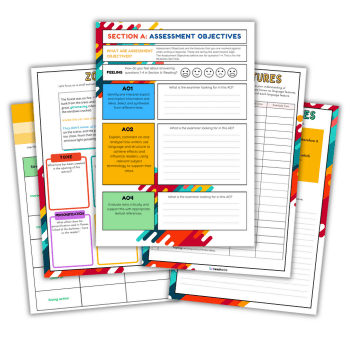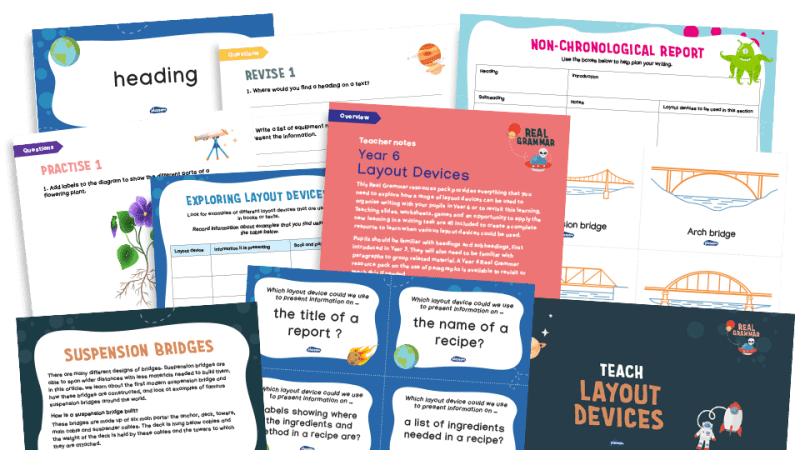English Language – End their GCSE lessons with a bang, not a yawn

Banish the rote routines of those final lessons before the GCSE English language paper and liven things up a bit, suggests Jennifer Hampton…

They know the question types. They’ve practised them with a range of extracts. They’ve written countless narratives, descriptions and articles.
They’ve done the ‘green pen work’, or DIRT, or whatever your school’s equivalent of feedback response is. They’ve ‘walked and talked’ countless past papers. They’ve completed the online quizzes and watched all the exam
board videos.
With the English Language GCSE, it can be easy for students and teachers alike to feel that the course is ‘done’ and all the necessary skills have been taught. How, then, do we put the bounce back into these lessons as the exam approaches? And how can we ensure that said bounce has meaningful impact at a point when, frankly, we’re all a bit sick and tired of it?
From students to examiners
There’s a huge volume of evidence telling us that students’ comprehension of texts is much less than we think. We’re all familiar with the grim statistics about literacy levels and especially how pronounced they are among
particular groups.
With that in mind, how often have you seen analysis, comparative and evaluative responses foiled by simple misunderstandings? One way of tackling this is to explore more deeply what examiners will be looking for by giving students texts and asking them to design a series of questions to test their peers’ comprehension.
Making this a paired activity, with students focusing on clarifying meaning by helping each other, is a rich and rewarding process. For each question, students will need to know the answer so they can test their classmates orally in groups or in a whole class scenario.
To do it well, however, they’ll first need to interrogate the text themselves. Consequently, they’ll get to see the text from a different perspective, and can even be empowered by the role play involved: ‘Mr Smith, will you please deliver your questions on the opening paragraphs now…?’
Give them the text(s), and as a group or pair challenge, get them to write the paper. They’ll need a past paper to refer to, so that they can replicate the language in which the questions are written. They’ll also need to think carefully about which sections of the text will be appropriate for each question, and have some ideal responses in mind.
Again, this process will involve them interrogating the text for themselves. Where appropriate, the task can be extended further by asking students to create section B writing tasks, or even write out indicative responses as part of a mark scheme.
Find the joy in SPAG
If, like me, you’ve ever wondered where all the commas and full stops went during those periods of remote learning (let’s not mention the ‘C’ word), then you’ll know all too well how this cohort might need more support when it comes to gaining those all-important SPAG marks, since they can make all the difference.
I’m no fan of comma splicing, it’s so annoying (sorry). If you want to nip that tendency in the bud, try the ‘splice or nice’ activity. This involves presenting students with a sentence containing a comma, and inviting them to discuss and decide whether that comma is doing the job it was originally intended for, or is actually usurping a full stop, conjunction or the lesser spotted semi-colon. Use mini whiteboards, cards or thumbs to lend the activity a ‘Roman gladiator arena’ flourish.
If students aren’t using the semi-colon and its similarly low profile comrades, the dash and colon, train them with a safe structure. There’s a good example contained in a line from Animal Farm: “Let us face it: our lives are miserable, laborious and short.”
Ask students to write as many different versions of this sentence, from as many different perspectives as possible while still using the same opening words and structure. Use a timer and have them race each other in the quest to come up with as many accurate sentences as possible.
Because let’s face it: their punctuation could be more interesting and exciting. Find other fabulous sentences and replicate this process, and celebrate any subsequent sightings of bold punctuation in their written work.
In the exam they’ll be on their own with the text, and yes, we need to rehearse this and practise what to do in class. A fun way of doing this can be to have partners read the text aloud to each other, but swap roles whenever they encounter specific forms of punctuation. This can heighten their awareness of how the writer has used these little beasts, but also how they can too.
According to the mental health support organisation MIND, 1 in 6 young people have a mental health problem. We don’t need to sacrifice their learning in order to take the pressure off them; we just need to vary the nature of the tasks they’re set and watch for the energy change that this can bring about for a fatigued class.
Just READ
As English teachers, we know that readers – that is, regular readers for pleasure – are more successful in the English Language exam. Granted, it’s generally too late at this stage to instil such habits in students who don’t already have them, but we could still dedicate a whole lesson to the reading out of a brilliant short story as students read along.
We all have our favourites; those short stories that never fail to engage even the most reluctant readers and disengaged classes. One involving a taxidermist landlady immediately comes to mind.
There’s something warm and comforting for everyone in a lesson dedicated purely to enjoyment and appreciation of great characters and walloping cliff hangers. Fidgeters can draw and sketch events as they listen, for example.
Because really, at the end of the day, isn’t that what the language exam is actually all about – showing appreciation of what writers do, and trying to emulate those skills in the writing section? Sometimes, it can be necessary for us to step away from the ever present glare of assessment objectives and take in the bigger picture.
Moreover, if we’re able to step away from the structure strips and past papers and tweak our planning accordingly, it’s just possible that we teachers – in this tomato-less era of gloomy economic forecasts and strike action – might feel a little less fatigued ourselves.
Channel that KS3 energy
You may be like me and keep a bank of resources for Y7 comprising envelopes, big sheets of coloured paper and sundry other lovely things. In contrast, your Y11 resource stockpile will more likely be limited to a heavy box containing booklets and past papers – but it doesn’t have to be…
- Try harnessing that strange mix of tension and tedium in the build-up to exams by running group work challenges, such as sorting words into types. Consider whether your lessons at this time are less dynamic than they could be.
- Do your exam classes get to move around during lessons – even if it’s just walking around reading other students’ writing? Do they get to draw? It can be helpful to summarise a text using images alone, or sketch out a rich description that you read aloud.
- This cohort – given the well-documented mental health pressures they were already under pre-pandemic, subsequent school closures and endless gloom of the cost of living crisis – could really do with some additional creativity in their lessons. So give it to them.
Jenny Hampton (@brightonteacher) is an English teacher, literacy lead and former SLE (literacy). Download our AQA English Language Paper 1 ultimate revision booklet.











